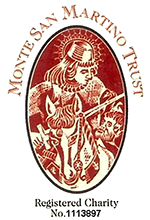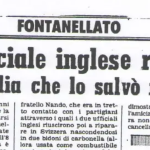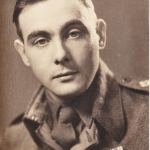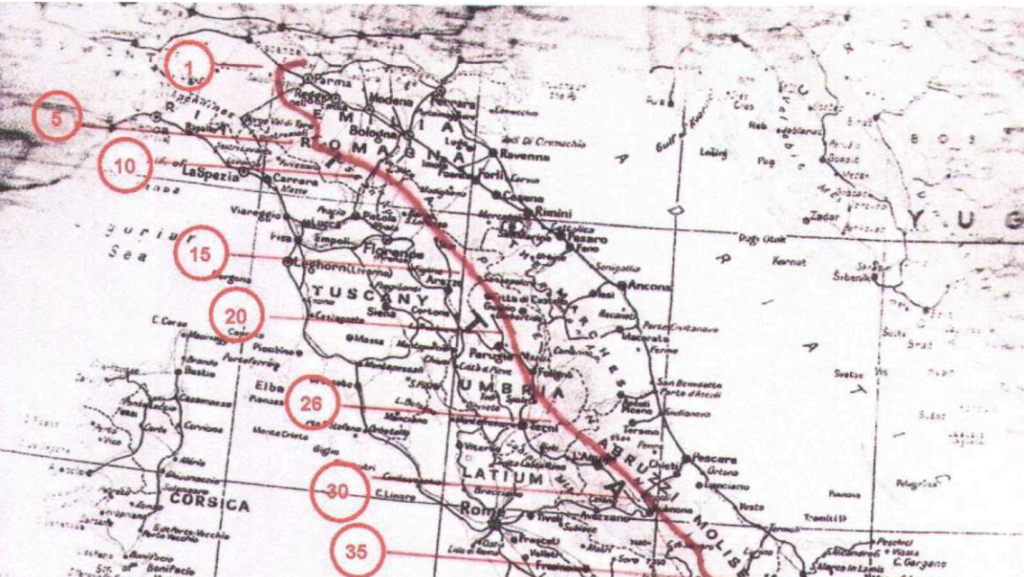Summary of Humphrey Turner
Humphrey James Turner’s account is told through a de-brief document, which gives his escape route and companions. He spent time in various prison camps including Camp No 66 (Capua), Camp No 17 (Rezzanello) and Camp No 49 (Fontanellato). After several months surviving on the run one of their Italian helpers managed to borrow about 50,000 Lire so that they could pay for Turner’s journey to Switzerland. Turner arrived in Switzerland on 12th Jan 1944 and remained there until Oct 1944 when he left for the United Kingdom, arriving on 7th Oct 1944.
The full story follows, in two versions. The version in the first window below is the original scanned version of the story. In the second window below is the transcribed version in plain text.
[Digital Page 1]
Handwritten: Copy to AI1(a) P/W SECRET MI [Military Intelligence] 9/S/P.G.( )
ADDENDUM TO PW/EX [Exercise]/SWITZ/1.
The information contained in this report is to be treated as SECRET.
STATEMENT BY 115614 F/Lt. [Flight Lieutenant] Humphrey James TURNER, 33 Sqn. [Squadron], MEC [Medical Examination Centre], RAF [Royal Air Force]
Captured: Near FUKA 3 Nov 1942 Escaped: FONTANELLATO 9 Sep 1943
Left: Arrived:
Date of Birth: 13 Nov 1915 Peacetime Profession: National Cash Register.
RAF [Royal Air Force] Service: Since Jun 1940 Private Address: 20 Grove Road, PINNER, Middlesex
1. CAPTURE
I took off from a landing ground near BERG EL ARAB in a Hurricane aircraft at 0600 hours, on 3/4 Nov 42 to strafe the coast road west of DABA. I was hit by flak somewhere between FUKA and DABA and was forced to crash-land. I was captured immediately by Italians. These men became very threatening, and had it not been for the appearance of members of the Wehrmacht, I would have been shot out of hand.
I was wounded in the head and almost unable to see; the Germans took me to a field hospital and on the way I was briefly interrogated by a German officer. I refused to answer any questions, and the interrogation was not pressed. From here I was taken to a German flak post where I spent a couple of days, at this point I was joined by an American fighter pilot, and we both decided that we would demand hospital treatment because we thought it would be easier to escape from here rather than a POW Camp. We were accordingly sent to a hospital at MERSA MATRUH. We only remained at the hospital for a few hours, however, and from here were sent to TOBRUK heavily guarded. We spent one night at BENGHASI and then were sent by ship to TRIPOLI.
During this time, we did a certain amount of propaganda, both amongst the Italians and the Germans. During our journey by sea to TRIPOLI, three P/W including myself, were bound hand and foot and blindfolded, while we were beaten up with rope, there was no reason for this treatment. I made a report of this to the Red Cross authorities when I reached Campo No. 49 (FOMTENELLATO) [*FONTANELLATO].
I spent three days in TRIPOLI, and from here was shipped over to NAPLES which I reached about 22 Nov 42.
2. CAMPS IN WHICH IMPRISONED.
Campo No. 66 (CAPUA) 23 Nov – 31 Nov 1942
Campo No. 17 (REZZANNELLO) [*REZZANELLO] 31 Nov 1942 – Mar 1943
Campo No. 49 (FOMTANELLATO) [*FONTANELLATO] Mar 1943 – 9 Sep 1943.
3. ATTEMPTED ESCAPES. Nil.
4. ESCAPE ACTIVITIES.
While I was in FOMTANELLATO [*FONTANELLATO], I assisted the Escape Committee, by helping to provide escape materials, such as trap doors, etc. under cover of making stage scenery. Our activities were
[Digital Page 2]
organised by Lieut. [Lieutenant] HARTLEY, RE [Royal Engineer], who had four officers including myself, working for him. While I was here several tunnelling operations were begun, but without success.
5. ESCAPE
On 9 Sep 1943, at the news of the German approach, the gates of Campo No. 49 were opened, and according to previous instructions by the SBO [Senior British Officer], Colonel de BURGH, and by arrangements with the Italian Commandant, the whole camp marched out to a hiding place a short distance away. We took with us a small amount of food, and remained in hiding for about two days. At the end of this time, since the Germans were in occupation of the Camp, we were ordered to disperse and use our own discretion as to our escape.
I set off in a party of 5, consisting of F/Lt. [Flight Lieutenant] J. HALL, F/Lt. [Flight Lieutenant] E. BLACK, F/Lt. [Flight Lieutenant] J. YOUNG, and F/Lt [Flight Lieutenant] E.C.F. DAWSON. We made our way South-east toward LA SPEZIA, where we had been told there had been an American landing, we kept to the vineyards walking by night and sleeping by day, we took our position from the sun and the moon. For the first three days, we spoke to no one. We reached MARIANO, near PELLEGRINO on the third day; here we made contact with the local priest who told us there had been no landing at SPEZIA, and that it was useless to continue on to PELLEGRINO since the town was full of fascists. HALL and YOUNG decided to remain behind at MARIANO. BLACK, DAWSON and I made our way into the mountains to the vicinity of BARDI where we believed there were many Italians with now Allied sympathies.
Two days later we reached SCARTAZZA near VARSI. We remained in the BARDI – BORGO VAL DI TARO – FORNOVA area from the beginning of Oct until the end of Dec. We were given food and shelter by various Italian families during this time and were also provided with civilian clothing. While we were here, we studied the Allied and German positions with a view to making good our escape. We had one chance offered us of a route to SWITZERLAND but as this was to cost 50,000 lire we turned it down, the more firmly as we believed an Allied landing to be imminent. DAWSON and I got to know the country round about very well, and through our contacts we were able to warn other P/W of impending German search parties. We rescued Lieutenant POYNTON from his hide-out a day before a German raid took place and brought him back with us to safety.
We also used to take down the BBC news, and spread it around the villages as propaganda. These activities proved effective, for at the new call-up of Italian men not a single Italian reported from this area, which was accordingly classed as rebellious.
In November DAWSON fell ill, and had to take to his bed. We arranged with three different families to care for him, and he moved around staying with first one and then the others, according to the areas in which the raids were about to take place. I knew that DAWSON was really a hospital case, and went ahead with arrangements to get him to SWITZERLAND. In Dec I made contact with the niece of an Italian I knew. She put us in touch with helpers in FIDENZA, and made all arrangements. At the end of Dec DAWSON and I set out for this town, which we reached three days later, and where we remained for about a week with our new found friends.
One of our helpers in FIDENZA borrowed about 50,000 lire in order to pay for our journey to SWITZERLAND. We in turn gave him cheques for that amount in English money to be honoured after the war. We left by train for MILAN, accompanied by a guide on 7 Jan 1943. We spent the night at a cafe, and caught a train to COMO the next evening. We spent that night and the whole of the next day in a smugglers hut.
On the evening of 12 Jan [1943] we set out for the border, and after a great deal of climbing, we crossed the border into SWITZERLAND early the next morning. Here our Guides left us and shortly afterwards we were picked up by Swiss guards. After a few days spent in various camps, I reached BERNE where I reported to the Air Attaché. DAWSON was taken straight to hospital.
I remained in SWITZERLAND until Oct 45 (*1944), when I left for the U.K. which I reached on 7 Oct.



